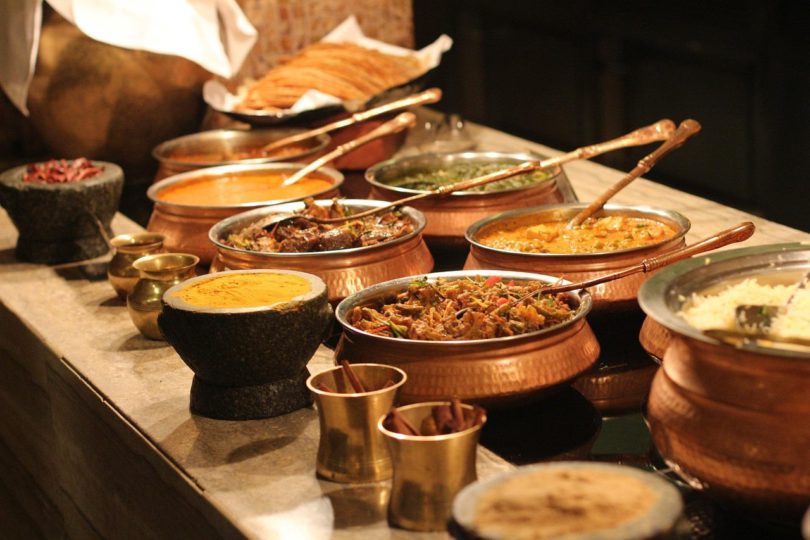Over the past twenty years, Executive Chef Vikas Khanna has had a front-row seat to the transformation of Indian cuisine in the United States. His New York restaurant Junoon, which earned a Michelin star, was one of the first Indian establishments in the country to receive that recognition, signaling a turning point in how Indian food was viewed on the fine dining stage.
In the years following 9/11, Khanna recalls that many of his early employers hesitated to showcase the full breadth of India’s culinary traditions. Dishes like butter chicken and chicken tikka masala—while delicious—were the safe choices, crafted to meet the expectations of an American audience unfamiliar with more diverse regional fare. That changed when the late Anthony Bourdain visited Junoon and encouraged Khanna to lean into authentic Indian cooking. The advice inspired Khanna’s next project, Bungalow, which has quickly become one of the hottest reservations in New York.
His partner at Bungalow, restaurateur Jimmy Rizvi, says the demand has been extraordinary. With tables booked out well in advance and waitlists running long, the restaurant serves up to 400 guests every evening. Less than two years after opening, Bungalow is already listed among the top ten New York restaurants on the reservation platform Resy. “There’s definitely more awareness of Indian food now,” Rizvi told CNBC, adding that diners are beginning to discover the nuances of regional cuisines.
A Culinary Shift
Khanna has watched the perception of Indian dining in America evolve dramatically. What was once largely associated with inexpensive buffets and takeout curry houses has now emerged as a contender in the fine dining scene, standing alongside French and Italian establishments.
Foodservice analyst David Portalatin of Circana notes that fine dining as a whole has become more appealing in the post-pandemic era, with guests seeking experiences that go beyond the plate. Even amid inflation, fine dining visits in July were up 5% compared with the previous year. “Fine dining remains a bright spot,” Portalatin explained, as consumers look for meals that feel both special and memorable.
Generational shifts are also driving the trend. Millennials and Gen Z are particularly adventurous eaters, eager to explore global flavors. According to Datassential, 115 new Indian restaurants had opened across the country by the end of 2024, compared to just 54 six years earlier. Today, there are 154 upscale Indian restaurants in the U.S., up from 101 in early 2018.
Resy CEO Pablo Rivero sees the momentum firsthand. “Modern Indian restaurants are pushing the category forward with ambitious menus and creative formats,” he said, noting that diners are hungry for new expressions of Indian cuisine.
Growing Investor Appetite
It’s not just diners showing interest—investors are paying attention, too. The popular British chain Dishoom is preparing to make its U.S. debut, backed by private equity firm L Catterton, which recently acquired a minority stake in the company, valuing it at around $400 million.
In New York, Roni Mazumdar and Chef Chintan Pandya, the duo behind Semma and Dhamaka, say investors are reaching out more than ever. “No one really viewed Indian food as a serious business until recently,” Mazumdar said. “Now the perception has shifted.”
Spotlight on Regional Flavors
One of the defining characteristics of this new wave of Indian dining is a sharper focus on regional diversity. Instead of relying solely on familiar northern dishes, chefs are shining a light on the culinary traditions of states like Tamil Nadu, Kerala, and Gujarat.
Semma, which topped The New York Times’ list of best restaurants in 2025, has earned acclaim for its dedication to authentic South Indian cooking. “Semma succeeds because it connects deeply with real Indian food,” Pandya explained. “Our goal is to serve the dishes we grew up eating and love.”
Veteran restaurateur Avtar Walia, who has run Tamarind in Tribeca since the 1970s, also credits regional variety as the secret to longevity. By rotating his lunch menu to feature street food staples and regional specialties, he has managed to keep diners coming back. “Ninety-five percent of our customers are regulars,” Walia said, adding that Tamarind has become a mainstay for the Wall Street crowd.
A Growing Cultural Footprint
The rising popularity of Indian cuisine in America mirrors demographic shifts as well. Since 2000, the Indian American community has grown by more than 3 million people, according to Pew Research Center. Their median household income reached $151,000 in 2023, far higher than the overall Asian American average of $105,000, which helps explain the demand for upscale dining experiences.
At Bungalow, Khanna continues to see the impact of this shift firsthand. The restaurant attracts a mix of loyal locals, curious first-timers, and notable guests—from Bollywood stars to Jeff Bezos, who reportedly called his visit to the restaurant “a pilgrimage home.” For Khanna, those moments represent more than celebrity endorsements—they reflect the growing appreciation of Indian food in all its depth and richness.

